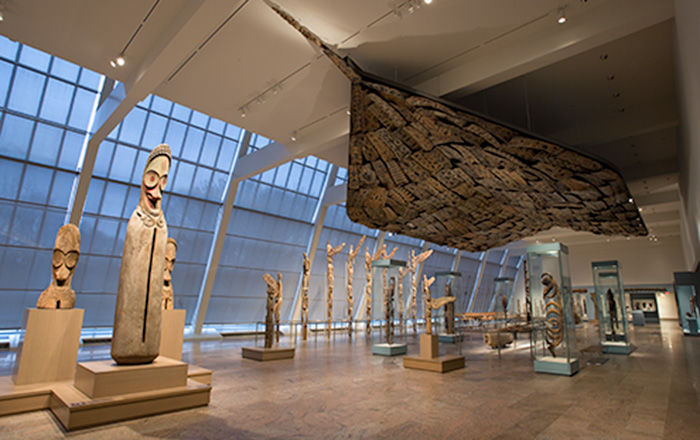Kablé (buffalo helmet mask)
Northern Tussian or Siemu blacksmith
The individual who designed this abstracted headdress played with the intersection of two- and three-dimensional forms. The figure of a highly stylized buffalo is composed of a narrow cylindrical body connecting the two parallel planes of the shoulders and hips. Danced at funerals of prominent community members, the performance was inspired by the behaviors of the buffalo. The choreography adopted the animal’s stamping of the earth and kicking up of dust in an animated, aggressive display.
Animal headdresses like this kablé were performed by male initiates into the powerful Do society, which provided Tussian men and women with social and religious education. The society is named after the guardian spirit Do, whom the Tussian believe to be the oldest regional divinity. Masked performances are central to Do practices, a connection emphasized by the fact that masks are collectively referred to as dopikwa or "children of Do." They are danced at events ranging from initiation ceremonies to village purification rites to funerals of prominent community members, accompanied by the performers singing lyrics in do wey, the esoteric language of Do. Many masks take the form of a buffalo or bull because they are among the most powerful animals in the wilderness and are closely associated with the Do spirit.
This image cannot be enlarged, viewed at full screen, or downloaded.
This artwork is meant to be viewed from right to left. Scroll left to view more.

